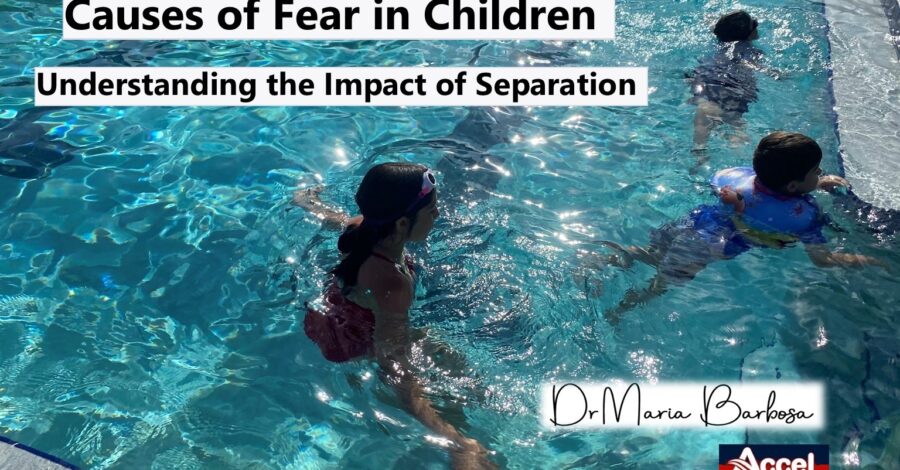Understanding the Impact of Separation
Introduction
In the intricate web of a child’s emotional development, the specter of fear can cast a long shadow, affecting not only their formative years but echoing into adulthood. One of the key catalysts for fear in children is the feeling of separation. As we delve into this nuanced aspect, we uncover the profound impact it can have on a child’s psyche and the ripple effects that resonate through their lives.
A child can experience fear in various situations or types, and one of the primary triggers is the feeling of separation. This emotional response can manifest in different scenarios, each contributing to the child’s overall sense of fear and anxiety. Here are several situations where a child may feel fear due to separation:
- Separation from Caregivers: The most common scenario is when a child is separated from their primary caregivers, such as parents or guardians. This can occur during daycare, school, or even brief periods of absence.
- New Environments: Entering unfamiliar environments, whether it be a new school, a playdate, or a social gathering, can evoke fear in children. The absence of familiar faces intensifies the sense of separation anxiety.
- Bedtime Separation: The bedtime routine, marked by the separation from caregivers for the night, can trigger fear in children. The prospect of being alone in the dark can amplify feelings of separation-induced anxiety.
- Medical Situations: Hospital visits or medical appointments can be daunting for children, especially when separated from their family during treatments or examinations. The unfamiliarity of the medical setting contributes to their fear.
- Temporary Separations: Even short separations, such as a parent leaving for work, can elicit fear in children. The temporary absence creates a sense of uncertainty, leading to emotional distress.
- Social Situations: Participating in social activities or events without familiar faces nearby can trigger separation-induced fear. The child may feel isolated and vulnerable in unfamiliar social settings.
- Transitions: Life transitions, such as moving to a new home or changes in family dynamics, can intensify separation anxiety. The disruption to routine and familiar surroundings contributes to heightened fear.
- Peer Interactions: Interactions with peers, especially if the child feels socially isolated or experiences conflicts, can be a source of separation-induced fear. The fear of rejection or exclusion can impact their social well-being.
- Parental Conflict: Witnessing parental conflict or discord can create an emotionally charged environment for a child. The fear of family separation or disruption can contribute to their overall sense of fear and insecurity.
- Loss or Bereavement: Experiencing the loss of a loved one or pet can profoundly impact a child. The separation from someone significant in their life can evoke a range of emotions, including fear and grief.
Unraveling the Threads of Separation Anxiety
Separation anxiety is a natural part of a child’s cognitive and emotional evolution. However, when this normal phase intensifies, it can sow the seeds of fear that endure. The fear of being apart from caregivers or loved ones can manifest in various ways, from clinginess and distress to physical symptoms like headaches or stomachaches. Understanding these various situations in which a child can feel fear due to separation is crucial for caregivers and parents. Addressing these fears with empathy and implementing supportive strategies can contribute to a child’s emotional well-being and resilience.
The Root of Fears: Understanding Emotional Separation
At the core of separation-induced fear lies the emotional aspect. Children, inherently reliant on the comfort and security provided by their caregivers, may find any deviation from this norm distressing. The fear stems from the uncertainty of navigating the world without the anchor of familiar faces and nurturing figures.
Impact on Future Well-being: Tracing the Lifelong Implications
The impact of separation-induced fear in childhood is not confined to the early years. Studies suggest that children experiencing intense separateness may carry this emotional baggage into adulthood, affecting their ability to form healthy relationships and hindering the enjoyment of a fulfilling adult life.
Strategies for Mitigating Separation-Induced Fear
Understanding the gravity of separation-induced fear allows us to explore proactive measures to alleviate its effects. Implementing these strategies can empower caregivers and parents in fostering a resilient emotional foundation for their children.
Building Emotional Resilience: Nurturing Independence
Encouraging a child’s independence from an early age is paramount. Gradual exposure to brief separations, coupled with positive reinforcement, helps cultivate emotional resilience. This proactive approach equips children with the tools to navigate the world with confidence.
Establishing Trust through Communication: Open Lines of Communication
Establishing trust and maintaining open lines of communication with children requires a thoughtful and empathetic approach. The goal is to create an environment where children feel comfortable expressing their emotions and fears. Here are various types of communication strategies that can foster trust and open dialogue:
- Active Listening: Actively listening to a child’s thoughts, feelings, and concerns is fundamental. Giving full attention, making eye contact, and responding empathetically communicates that their voice is valued and heard.
- Nonverbal Cues: Nonverbal communication, such as body language and facial expressions, plays a crucial role. Creating a warm and open physical environment encourages children to share their emotions without fear of judgment.
- Encouraging Expressive Arts: For younger children, engaging in expressive arts like drawing, painting, or storytelling can provide alternative avenues for communication. This allows them to articulate their feelings in a way that feels natural and unforced.
- Questioning with Empathy: Asking open-ended questions with empathy encourages children to share more about their experiences and emotions. Avoiding judgmental or leading questions creates a safe space for open dialogue.
- Respecting Privacy: Respecting a child’s need for privacy is crucial. While encouraging communication, it’s important not to press for information they may not be ready to share. This respect reinforces a sense of trust.
- Routine Check-Ins: Establishing regular check-ins, whether daily or weekly, creates predictability. Routine conversations about their day, experiences, or concerns become normalized, making it easier for children to open up.
- Modeling Open Communication: Children often learn by example. Modeling open communication within the family or caregiving environment demonstrates the value of expressing emotions and fosters a culture of openness.
- Creating a Safe Space: Designating a physical or emotional “safe space” where children feel comfortable sharing their thoughts without fear of repercussions is essential. This space should be free from judgment or punishment.
- Acknowledging and Validating Emotions: Acknowledging a child’s emotions, even if they may seem trivial, validates their feelings. Validating emotions fosters trust and helps children feel understood and supported.
- Empathetic Responding: Responding to a child’s emotions with empathy rather than judgment is key. Understanding their perspective and expressing empathy helps build a strong foundation of trust.
- Problem-Solving Together: Collaboratively problem-solving with children reinforces that their opinions and input are valued. This approach empowers them to be active participants in finding solutions to challenges.
By incorporating these communication strategies, caregivers and parents can create an environment that not only establishes trust but also encourages open lines of dialogue. This, in turn, allows children to express their emotions and fears, fostering a sense of trust and security within the family dynamic.
Conclusion
Acknowledging the profound impact of this fear is the first step toward mitigating its effects. By understanding the root causes, lifelong implications, and implementing proactive strategies, we can empower caregivers and parents to guide their children towards a future unburdened by the weight of separation-induced fear.
It is important to Seeking Professional Support: Working with children’s fear emotions involves a holistic approach that encompasses emotional expression, building resilience, establishing trust, facilitating open communication, and promoting a supportive environment. By employing these strategies, caregivers and educators can empower children to navigate separations with confidence, ultimately freeing them from the fear of separation and fostering emotional well-being.
By: Maria Pinto Barbosa PhD #DrBarbosa
Certified as School Board of Education / PHD-Doctor of Philosophy in Cristian Clinical Counseling
ACCEL-Holistic Life Coach / Founder-Director of ACCEL Educational Leadership
Specialized on Temperaments – Personalities
Pastor Christian Minister Clergy / Bachelor of Theology in Pastoral leadership and Certified EETAD Theology
Discover more from Dr Maria Barbosa
Subscribe to get the latest posts sent to your email.





